| Listing 1 - 10 of 11 | << page >> |
Sort by
|
Book
ISBN: 1280614145 9786610614141 2287304894 Year: 2006 Publisher: Paris : Springer,
Abstract | Keywords | Export | Availability | Bookmark
 Loading...
Loading...Choose an application
- Reference Manager
- EndNote
- RefWorks (Direct export to RefWorks)
Le système TNM constitue la classification la plus largement utilisée pour décrire la croissance et l'extension des tumeurs malignes. Cette classification apporte une aide considérable au clinicien dans la définition de son pronostic et l'établissement de son planning de soin. Elle permet une évaluation plus précise des résultats du traitement préconisé. Elle facilite les échanges d'information entre les centres anticancéreux et contribue à la poursuite des recherches en cancérologie. L'Atlas TNM est conçu comme un outil pratique pour l'application du système de classification TNM.
Tumors --- Cancer --- Oncology --- Tumor coding --- Staging
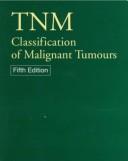
ISBN: 0471184861 9780471184867 Year: 1997 Publisher: aNew York: Wiley,
Abstract | Keywords | Export | Availability | Bookmark
 Loading...
Loading...Choose an application
- Reference Manager
- EndNote
- RefWorks (Direct export to RefWorks)
Neoplasms --- Tumors --- Tumeurs --- classification --- Classification --- Cancer --- Oncology --- Tumor coding --- Staging --- classification. --- Neoplasms - classification --- Tumors - Classification
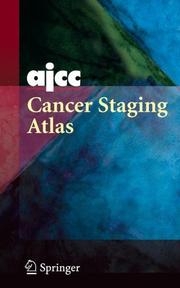

ISBN: 128061899X 9786610618996 0387331263 0387290141 Year: 2006 Publisher: New York, NY : Springer New York : Imprint: Springer,
Abstract | Keywords | Export | Availability | Bookmark
 Loading...
Loading...Choose an application
- Reference Manager
- EndNote
- RefWorks (Direct export to RefWorks)
The AJCC Cancer Staging Atlas contains black-and-white illustrations, created exclusively for the book, depicting the anatomic extent of disease for tumor (T), regional lymph node (N), and distant metastasis (M). The images provide thorough anatomic depictions to clarify critical structures and allow the reader to instantly visualize the progressive extent of malignant disease. Numerous labels identify important anatomic structures. NOTE: The AJCC Cancer Staging Atlas is based on the 6th edition staging schemas and many images may not reflect the current 7th edition staging system.
Tumors --- Pathology --- Disease (Pathology) --- Medical sciences --- Diseases --- Medicine --- Medicine, Preventive --- Cancer --- Oncology --- Tumor coding --- Staging --- Oncology . --- Surgical oncology. --- Pathology. --- Surgery. --- Oncology. --- Surgical Oncology. --- Surgery, Primitive --- Oncologic surgery --- Oncological surgery --- Surgical oncology --- Excision --- Treatment
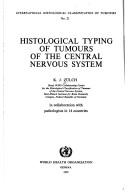
ISBN: 9241760214 Year: 1979 Publisher: Geneva WHO
Abstract | Keywords | Export | Availability | Bookmark
 Loading...
Loading...Choose an application
- Reference Manager
- EndNote
- RefWorks (Direct export to RefWorks)
Central nervous system --- -Histology, Pathological --- -Tumors --- -Neoplasms --- Tumours --- Pathology --- Cysts (Pathology) --- Oncology --- Histopathology --- Pathological histology --- Histology --- Nervous system, Central --- Nervous system --- Tumors --- -Atlases --- Atlases --- Classification --- Histology, Pathological --- Cancer --- Tumor coding --- Tumors&delete& --- Staging
Book
ISBN: 9781444332414 1444332414 Year: 2010 Publisher: Chichester Wiley Blackwell
Abstract | Keywords | Export | Availability | Bookmark
 Loading...
Loading...Choose an application
- Reference Manager
- EndNote
- RefWorks (Direct export to RefWorks)
TNM Classification of Malignant Tumours, 7th Edition provides the latest, internationally agreed-upon standards to describe and categorize cancer stages and progression. Published in affiliation with the International Union Against Cancer (UICC), this authoritative guide contains important updated organ-specific classifications that oncologists and other professionals who manage patients with cancer need to accurately classify tumours for staging, prognosis and treatment. The major alterations addressed in the 7th Edition concern carcinomas of the oesophagus and the gastroesophageal junction, stomach, lung, appendix, biliary tract, skin, and prostate. In addition, there are several entirely new classifications: gastrointestinal carcinoids (neuroendocrine tumours), gastrointestinal stromal tumour, upper aerodigestive mucosal melanoma, Merkel cell carcinoma, uterine sarcomas, intrahepatic cholangiocarcinoma, adrenal cortical carcinoma. A new approach has also been adopted to separate anatomical stage groupings from prognostic groupings in which other prognostic factors are added to T, N, and M categories. These new prognostic groupings, as well as the traditional anatomical groupings, are presented for oesophageal and prostate carcinomas.
Kanker --- Kwaadaardige gezwellen --- Tumors --- Neoplasms --- Classification. --- classification. --- QZ 200 Neoplasms. Cysts (General) --- Gastrointestinal Stromal Tumors --- Head and Neck Neoplasms --- Carcinoma, Ductal, Breast --- tumoren --- Cancer --- Oncology --- Tumor coding --- Classification --- classification --- Staging --- Oncology. Neoplasms --- oncologie --- Kwaadaardig gezwel --- Tumeurs

ISBN: 1280612045 9786610612048 038723604X 0387236031 Year: 2005 Publisher: New York : Springer,
Abstract | Keywords | Export | Availability | Bookmark
 Loading...
Loading...Choose an application
- Reference Manager
- EndNote
- RefWorks (Direct export to RefWorks)
Lymph node (LN) status is the most important prognostic indicator for the clinical outcome of patients in human solid cancer. Recent developments in sentinel lymph node (SLN) concept and technology have resulted in the application of this revolutionary approach to determine if cancer has metastasized. The underlying thesis in solid cancer biology is that metastasis generally starts in an orderly progression, often spreading through the lymphatic channels to the SLN. Thus, the logical approach is to harvest that specific SLN for thorough analysis. The most exciting possibility of selective sentinel lymphadenectomy (SSL) is that it will lead to early diagnosis of micrometastasis in regional LNs. Early diagnosis makes it useful as a clinical staging procedure, and opens up new opportunities to study micrometastasis and its evolution within the SLNs. New molecular and genetic tools may be used to dissect the mechanisms of lymphatic and hemotogenous routes of metastasis. If such mechanisms can be understood, new therapeutic advances may be developed to prevent the process of micrometastasis. *********************************************************************************** Minimally invasive surgery associated with reduced morbidity has transformed the management of cancer patients. Sentinel lymphadenectomy for staging and treatment of solid tumors is now standard of care in many settings. In this text, distinguished investigators review the technical aspects and clinical considerations related to this procedure. Steven T. Rosen, M.D. Series Editor.
Lymphatic metastasis. --- Lymph nodes --- Tumors --- Biopsy. --- Medicine. --- Oncology. --- Surgical oncology. --- Medicine & Public Health. --- Surgical Oncology. --- Cancer --- Oncologic surgery --- Oncological surgery --- Surgical oncology --- Clinical sciences --- Medical profession --- Human biology --- Life sciences --- Medical sciences --- Pathology --- Physicians --- Excision --- Treatment --- Oncology --- Tumor coding --- Lymphatics --- Metastasis --- Staging
Book
ISBN: 9241544147 9789241544146 Year: 1990 Publisher: Geneva WHO
Abstract | Keywords | Export | Availability | Bookmark
 Loading...
Loading...Choose an application
- Reference Manager
- EndNote
- RefWorks (Direct export to RefWorks)
Tumors --- Neoplasms --- Classification --- classification --- 616-006 --- -Neoplasms --- Tumours --- Pathology --- Cysts (Pathology) --- Oncology --- Tumours. Neoplasms. Blastomata. Choristomata. Hamartomata. Oncology --- -classification --- 616-006 Tumours. Neoplasms. Blastomata. Choristomata. Hamartomata. Oncology --- -616-006 Tumours. Neoplasms. Blastomata. Choristomata. Hamartomata. Oncology --- Cancer --- Tumor coding --- Staging --- Tumors - Classification --- Neoplasms - classification
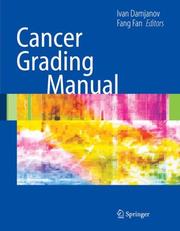
ISBN: 0387337504 9786610816606 1280816600 0387337512 Year: 2007 Publisher: New York : Springer,
Abstract | Keywords | Export | Availability | Bookmark
 Loading...
Loading...Choose an application
- Reference Manager
- EndNote
- RefWorks (Direct export to RefWorks)
Cancer Grading Manual addresses all histopathologic aspects of tumor pathology essential for grading of tumors. It discusses the history and basic tenets of tumor grading; principles of microscopic grading of tumors; ancillary methods currently used to improve tumor grading; and new techniques used in evaluating tumors and formulating prognosis. It is designed to be a practice-oriented, concise and well-illustrated resource for diagnostic surgical pathologists and pathology residents. The manual is organized by specific organ systems. Each chapter begins with an introduction and describes in detail the optimal and most widely used system for grading common tumors. There are 208 color illustrations. Ivan Damjanov, MD, PhD is a Professor of Pathology at the University of Kansas School of Medicine in Kansas City, Kansas. Fang Fan, MD, PhD is an Assistant Professor of Pathology at the University of Kansas School of Medicine in Kansas City, Kansas.
Oncology. --- Pathology. --- Tumors. --- Tumors --- Diagnostic Techniques and Procedures --- Diagnosis --- Analytical, Diagnostic and Therapeutic Techniques and Equipment --- Neoplasm Staging --- Medicine --- Health & Biological Sciences --- Oncology --- Pathology --- Classification --- Cancer. --- Histopathology. --- Neoplasms --- Tumours --- Cancer --- Tumor coding --- Cancers --- Carcinoma --- Malignancy (Cancer) --- Malignant tumors --- Staging --- Medicine. --- Medicine & Public Health. --- Cysts (Pathology) --- Oncology . --- Disease (Pathology) --- Medical sciences --- Diseases --- Medicine, Preventive
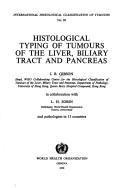
Abstract | Keywords | Export | Availability | Bookmark
 Loading...
Loading...Choose an application
- Reference Manager
- EndNote
- RefWorks (Direct export to RefWorks)
Bile Duct Neoplasms --- Gallbladder Neoplasms --- Liver Neoplasms --- Pancreatic Neoplasms --- Biliary tract --- -Histology, Pathological --- -Liver --- -Pancreas --- -Tumors --- -Neoplasms --- Tumours --- Pathology --- Cysts (Pathology) --- Oncology --- Digestive organs --- Endocrine glands --- Exocrine glands --- Abdomen --- Histopathology --- Pathological histology --- Histology --- Biliary tree --- Bile --- classification. --- pathology. --- Tumors --- -Diagnosis --- Atlases --- Classification --- -classification. --- Histology, Pathological --- Liver --- Pancreas --- Cancer --- Tumor coding --- Tumors&delete& --- Diagnosis --- classification --- pathology --- Staging
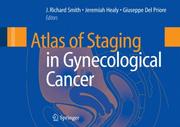
ISBN: 1281339741 9786611339746 1846284341 1846284333 Year: 2008 Publisher: London : Springer,
Abstract | Keywords | Export | Availability | Bookmark
 Loading...
Loading...Choose an application
- Reference Manager
- EndNote
- RefWorks (Direct export to RefWorks)
Atlas of Staging in Gynecological Cancer gives a practical approach to the topic and is designed to be used in conjunction with diagnostic procedures between the surgeon and the radiologist. This book describes the two common staging regimes used by all units across the world, namely, the FIGO and TNM systems. The landscape format allows each chapter to open on the left hand side and read across the double page, enabling the reader to see FIGO and AJCC staging together at the same time. Each chapter also has a separate section on Epidemiology, Diagnosis, Management, and a Summary section highlighting key points. The content of Atlas of Staging in Gynecological Cancer takes the reader through each gynecological cancer with a short text accompanying clear radiographic images with explanatory legends. Staging is also shown in pictorial form to aid clarity, with many tables further explaining suggested approach and workflow. The book will be of particular interest to the multi-disciplinary team that looks after this group of patients namely, clinical and radiation oncologists, surgeons, pathologists, radiologists and specialist nurses, all with their respective trainees.
Generative organs, Female --- Tumors --- Cancer --- Oncology --- Tumor coding --- Female generative organs --- Female generative tract --- Female genital tract --- Female genitalia --- Female reproductive system --- Female reproductive tract --- Generative organs --- Staging --- Gynecology. --- Oncology . --- Surgical oncology. --- Radiology, Medical. --- Pathology. --- Oncology. --- Surgical Oncology. --- Imaging / Radiology. --- Disease (Pathology) --- Medical sciences --- Diseases --- Medicine --- Medicine, Preventive --- Clinical radiology --- Radiology, Medical --- Radiology (Medicine) --- Medical physics --- Oncologic surgery --- Oncological surgery --- Surgical oncology --- Gynaecology --- Excision --- Treatment --- Gynecology . --- Radiology. --- Radiological physics --- Physics --- Radiation
| Listing 1 - 10 of 11 | << page >> |
Sort by
|

 Search
Search Feedback
Feedback About UniCat
About UniCat  Help
Help News
News